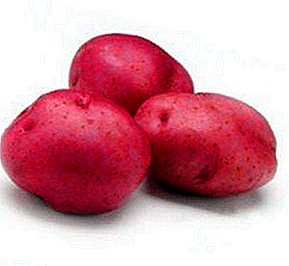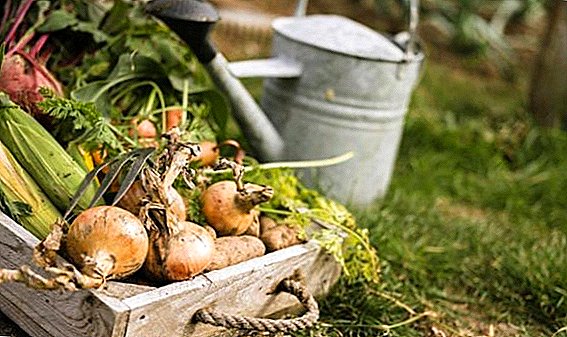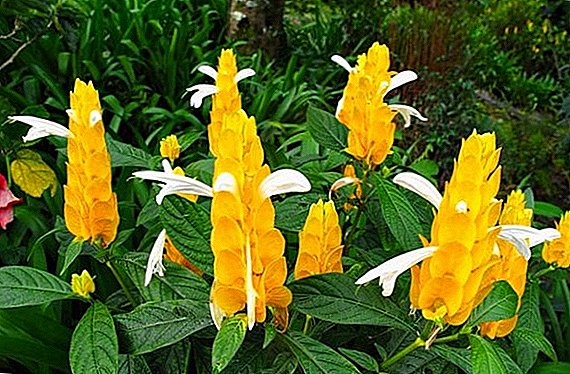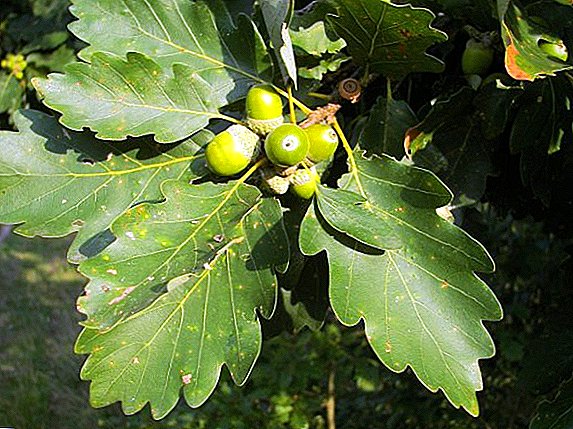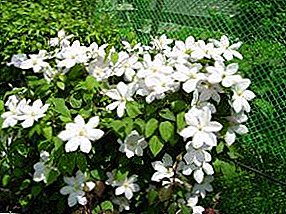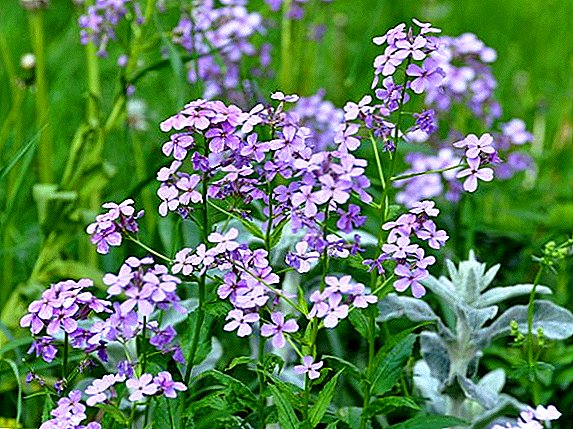 Two-horned mattiola - Annual plant, very beloved by many gardeners. The height of the stem can reach 50 cm, the leaves are large-toothed, green. The aroma of flowers is very thin, delicate and pleasant, intensifying in the late afternoon. During the day, the plant closes its flowers, and at night it opens again. For those who decided to decorate the garden with mattiola two-horned, in this article we will talk about how to plant and care for it.
Two-horned mattiola - Annual plant, very beloved by many gardeners. The height of the stem can reach 50 cm, the leaves are large-toothed, green. The aroma of flowers is very thin, delicate and pleasant, intensifying in the late afternoon. During the day, the plant closes its flowers, and at night it opens again. For those who decided to decorate the garden with mattiola two-horned, in this article we will talk about how to plant and care for it.
Where is the best place mattiola
For planting this flower you need to choose the right place, because the degree of lighting and the quality of the soil will affect the growth rate and development of the plant.
Lighting for growing
Mattiola two-horned very light-requiring, therefore, the landing area must be appropriate. Short-term darkening in no way will affect the plant, but planting in dark areas will doom the plant to poor flowering and weakness of the stems. It is also desirable that Mattiola not be blown by strong winds. It is best to plant this flower in a bed near gazebos, benches or other recreational facilities in the country.
Gloxinia, orchid, laurel, vanda, Benjamin's ficus, aihrizone, kolery, begonia, adenium and coleus are light-loving plants, therefore they grow only in open, well-lit places.

Soil requirements
In order for mattiol flowers to grow and develop fully, they should be planted in sandy, calcified or loamy soil of neutral acidity. It is not recommended to sow the plant where any cruciferous plants previously grew, because it increases the likelihood of mattiola disease such as fungus and keel, affecting the root system.
Important! Mattiola two-horned does not like abundant moisture in the soil, so you should not plant it in low-lying areas.
Sowing mattiola double-faced
If for mattiola carry out cultivation from seed, then the recommendation to the question of when to plant, will be the beginning and middle of April. More southern regions allow sowing for the winter - in November. If we talk about seedlings, then it should be prepared in late February and early March.
Seedless way
First you need to prepare the ground. To do this, in the late autumn one should dig up the soil to a depth of 30-40 cm, and then mix it with humus at the rate of 7 kg per square meter of land. After that, the soil is fertilized with liquid complex preparations or a neutral floral substrate. For one square meter will need three tablespoons of funds.
In the spring, before planting, it is necessary to loosen the soil, then make shallow (about 0.5 cm) grooves, which must be moistened. Seeds are mixed with sand, observing a proportion of 1:10 and sown evenly in the grooves. Sowing need to sprinkle with earth, not tamping, and again moisten. The first shoots can be expected after 1.5-2 weeks, if the sowing is carried out in the spring. If the flowers were sown in autumn, they will emerge next spring. Did you know? The plant got its name in honor of the famous Italian physician and botanist of the XVI century - Pietro Andrea Mattioli.
Seedling method
The seedling method of planting mattiols is used less frequently than the previous one. It is necessary to prepare the ground and containers (boxes) two days before the landing. Containers must be rinsed with clean water, which is added a little potassium permanganate, and then thoroughly dried.
At the bottom of the box you need to put a few pebbles that will serve as a drainage. Then the tanks are filled with the substrate, which is prepared from turf soil and sand in a ratio of 3: 1. The soil is watered with water, in which again you need to add a little potassium permanganate.
For the seeds to sprout faster, they should be soaked for 24 hours in boiled water at room temperature. They are then wrapped in a wet cloth and refrigerated for another 24 hours.
At the end of all the preparatory work, you can start sowing seeds. To do this, grooves are made in the soil, the distance between them should be about 4 cm. The seeds are laid out with a pair of tweezers 3 cm apart. The grooves are covered with earth and must be moistened. The box should be covered with glass and cleaned in a warm, but shaded place for 5-8 days. 
After that, you need to move the container in a well-lit room, while reducing the temperature to 12-14 ° C. It is necessary to change the temperature regime due to the fact that at high temperatures the formation of buds, as well as flowering, will be delayed.
When the seedlings grow and they produce 2-3 leaves each, the plant can be transplanted. Capacities will suit any - paper or plastic glasses, peat pots, etc. It is important to reduce the possibility of damage to the root system in the process of transplanting into the ground. The containers are filled with the substrate, which is prepared from turf and leafy ground with the addition of sand (1: 2: 1). Sprouting mettioli, before planting, it is necessary to water abundantly.
You can plant mattiola at a permanent place in the middle or at the end of May, keeping a distance of 15-30 cm between shoots. In the first days after planting, especially if the weather is hot, flowers should be better off.
Did you know? If mattiola planted next to the beds of potatoes, the plant will be wonderful to scare away various pests, including the Colorado potato beetle.

How to care for flowers
The plant does not require any special care. Even an aspiring florist can follow him. Let's tell the most important features of growing flowers.
Watering rules
Mattioli are very fond of well-moistened soil, therefore, they should be watered regularly, especially during periods of dry weather. But do not pour a lot of water at a time, it is better to divide the watering into several stages so that the water flows gradually and has time to be absorbed into the soil.
Fertilizer features
Any organic fertilizer for mattiola is contraindicated, so you can use only mineral purchased fertilizer for flowering plants. It is necessary to dissolve them in water, following the instructions, and carry out feeding. If the soil is fertile, such procedures will need to be carried out from 4 to 6 times, for poorer areas - 6-8 times. 
Important! In order to get a large number of flowers, fertilizer should be applied at the stage of mattiola budding.
Soil care and weed removal
In order for the plant to remain healthy during the whole growing season, we need to regularly weed the plot, removing all weeds and loosening the soil. This should be done extremely carefully, so as not to damage and so fragile stalks of mattiola.
Diseases and pests of the flower
- Watering - A mandatory step in the process of caring for mattiola. But it is important not to overmoisten the soil, because such a mistake can lead to the festering of the root system, as a result of which the flower will wither and die.
- Noticing any kind of damage on the foliage, it should be removed immediately to prevent the spread of infection to healthy leaves. If you had to deal with fungal diseases, diseased plants need to dig and burn. After that, the soil must be treated with anti-fungal drugs.
- When prolonged dry weather conditions may appear flea. They appear in the form of small holes on the leaves. Such plants can be sprinkled with wood ash.
- In the case when Mattiol is attacked by a whitegrass, it is necessary to treat it with insecticides.
Insecticides such as Vertimek, Fastak, Lepidocid, Kemifos, Akarin, Angio, BI-58, Iskra Double Effect, Decis and Nemabact protect Mattiola from insects and other parasites.

Mattiola two-horned - toraive and unusually fragrant garden plant. It does not require special conditions for cultivation, and is also not capricious in the care, which is ideal not only for experienced gardeners, but also for those who are just trying themselves in floriculture.




